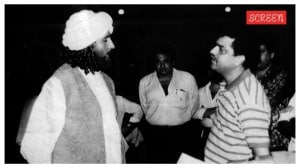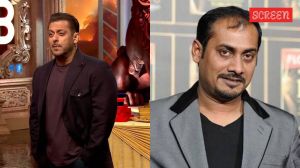Muscle fiber plays a vital role in deciding event: Dr Ghosh
CHANDIGARH, April 11: ``Role of the exercises physiologist has assumed greater significance in tapping the talent at the grass root level...

CHANDIGARH, April 11: “Role of the exercises physiologist has assumed greater significance in tapping the talent at the grass root level. However, due to inadequate man power and high cost of equipment it is not being done in our country,” said Dr Ashok Kumar Ghosh, who is a senior scientific officer at the Department of Physiology at the National Institute of Sports, Patiala.
Since the role of the physiologist in not known to many coaches at the state and district level, talent is not being tapped and nurtured in the right direction. “Experts of the western countries make full use of the exercise physiologist while selecting budding sportspersons and also when chalking out yearly training plans for the elite group for both in team and individual events, which has enabled them to make a rapid progress in the sports world, ” disclosed Dr Ghosh.
Says Dr Ghosh: “The government should plan to open up small laboratories at the district level to evaluate the performance of the individual sportspersons, which will enable the coaches to make a training plan according to the needs of individual players. This will give better results in all categories.”
But there are two main laboratories in the country. One is at Patiala and the other is in Bangalore. Only national campers and few trainees of Sports Authority of India (SAI) have access to these labs.
“Due to insufficient number of exercise physiologist in the country, the coaches are not able to coordinate with them and get their services. Even at the top level the scenario is not encouraging,”laments Dr Ghosh.
“There are few physiologist who cater to the needs of all the national teams. Instead, there should be specific physiologist for individual teams, who can evaluate their performance periodically in the lab and help them achieve the target.” But this is not happening. It is difficult for a coach to judge his trainee with a naked eye. He definitely needs the assistance of the physiologist, who can conduct various tests in the lab, to help improve the physical capacity of the individual.
Dr Ghosh quoted example saying that an elite marathon runner have 70 to 80 mililitres of oxygen carrying capacity, but a runner whose maximum capacity is less than 60 mililitre will not be able to perform well. “First the runner with 60 ml should think of raising his level of oxygen carrying capacity with a right blend of training, than only he can hope of competing against the best,” said the physiologist.
He said that muscle fiber also plays an important role in deciding the event for the individual. “A player, with 80 per cent slow twitch fiber, will not do well in explosive events. Whereas, a runner with 70 per cent fast twitch fiber can be a good sprinter”.






- 01
- 02
- 03
- 04
- 05

























